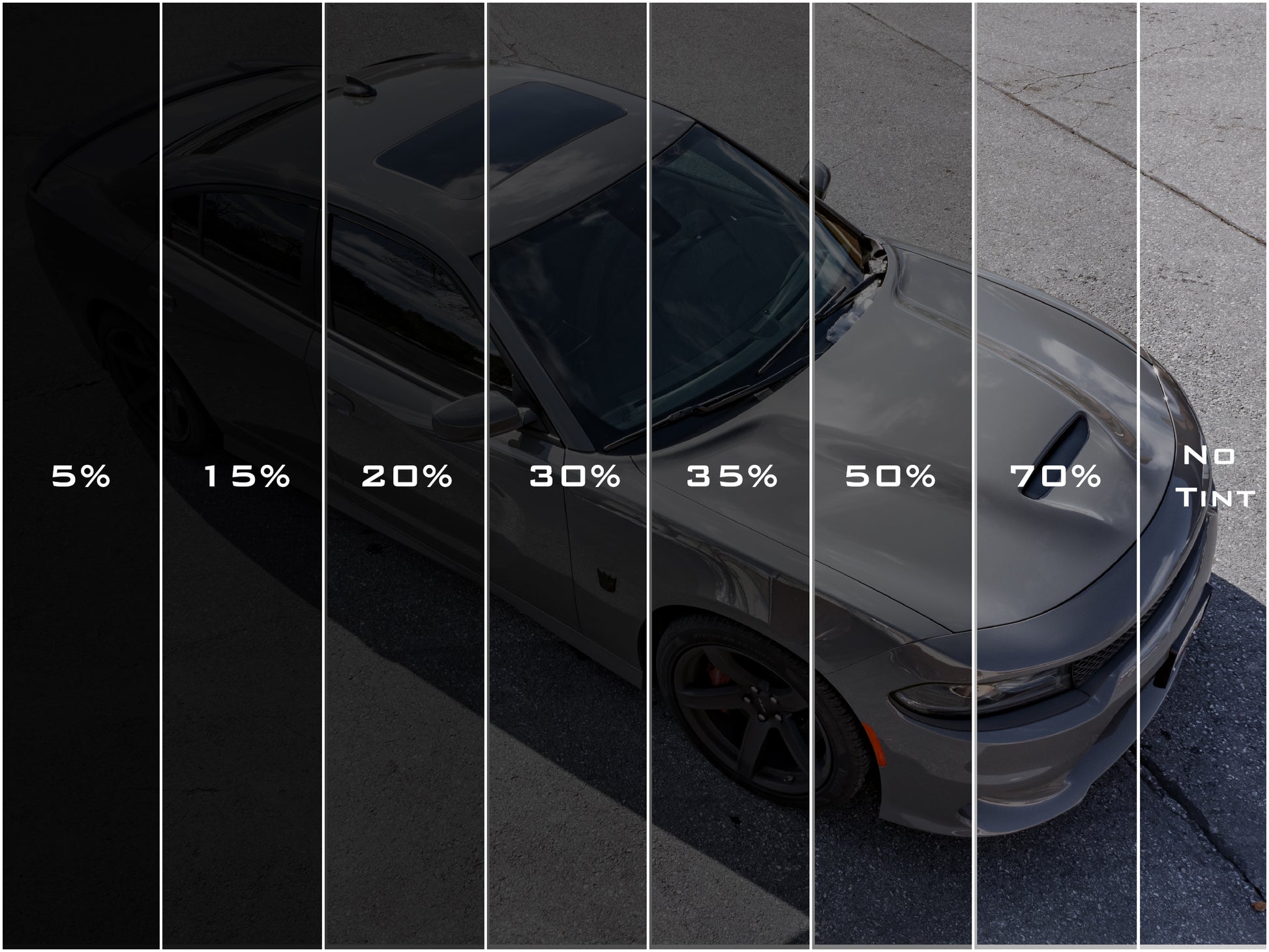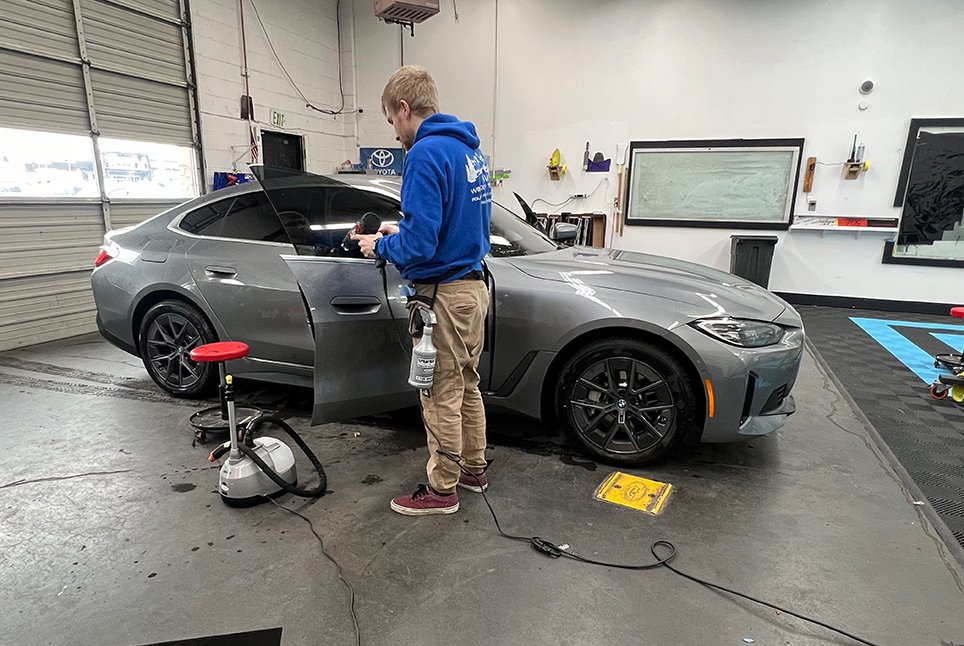Car Window Tinting: What to Expect During the Setup Refine
Car Window Tinting: What to Expect During the Setup Refine
Blog Article
Window Tinting Regulations and Standards: What You Need to Know Before Tinting Your Vehicle
Prior to proceeding with window tinting for your automobile, it is necessary to familiarize yourself with the diverse regulations and guidelines that control this technique across different states. These policies determine the acceptable levels of color darkness, typically gauged by visible light transmission (VLT) percents, and include specific terms for front windshields aimed at making sure road safety and security.
Summary of Home Window Tinting Laws
Window tinting regulations are often based on variant throughout different territories, showing neighborhood regulations and safety and security considerations. These laws dictate the allowable degrees of tint darkness and reflectiveness on lorry windows, making certain that vehicle drivers maintain adequate visibility while also protecting versus hazardous UV rays and heat.
The majority of laws identify window tinting based on the Visible Light Transmission (VLT) percentage, which suggests the amount of light that can pass with the window. Usually, lower VLT percentages symbolize darker tints. Legislations typically separate in between the front, side, and back home windows, with more stringent limitations applied to the front windscreen to improve safety and security for both the motorist and various other roadway customers.
Additionally, some jurisdictions impose restrictions on the reflectivity of the tint, protecting against excessive glow that could hinder exposure. Exceptions to these laws may exist for individuals with specific medical conditions calling for added sunlight protection. Conformity with home window tinting policies is vital, as violations can cause fines, compulsory removal of the color, and possible increases in insurance costs. For that reason, it is crucial for vehicle proprietors to familiarize themselves with local laws prior to proceeding with window tinting installations.
State-by-State Color Laws
Recognizing the details home window tinting laws in each state is essential for automobile proprietors seeking to adhere to the regulation. Each state in the U.S. has established its own collection of regulations controling window tinting, which can vary substantially. These regulations typically determine the allowable degrees of color darkness, the kinds of windows that can be tinted, and any type of clinical exceptions that might apply.
For example, states like The golden state have strict restrictions on tint darkness for front home windows, while others, such as New Mexico, might enable darker colors. Furthermore, particular states mandate details presence portions for different windows, including the windscreen, front side home windows, and back home windows. It is critical for car owners to acquaint themselves with their state's laws to stay clear of possible penalties or charges.
Additionally, some states may need a certification sticker to be positioned on colored windows, suggesting conformity with state legislations. Failing to abide by these regulations not only takes the chance of lawful effects yet can additionally impact security and exposure while driving. As a result, automobile owners ought to conduct detailed research study or speak with local authorities to make sure complete understanding and conformity with state-by-state color regulations.
Allowed Color Degrees and Types
Many vehicle proprietors might be stunned to discover that permitted tint degrees and types vary widely throughout various states. Each state has actually developed its own policies relating to the acceptable darkness and reflectivity of home window tint, typically measured by Visible Light Transmission (VLT) portions. VLT describes the amount of light that can pass with the colored windows; therefore, a lower percent shows a darker tint.

Additionally, the kinds of color materials permitted can differ, with some states restricting metal or mirror-like coatings. It is necessary for lorry owners to acquaint themselves with their state's details regulations to make certain conformity. Non-compliance can cause penalties, obligatory elimination of the color, or other legal consequences, making it critical to comprehend these regulations prior to waging installment.
Medical Exemptions for Tinting
While not all states provide allocations for clinical exceptions pertaining to window tinting, those that do identify the requirement for details people to boost exposure and convenience due to medical problems. Numerous clinical conditions, such as lupus, skin cancer cells, and specific eye problems, can provide individuals especially conscious sunshine. These individuals might need darker tints to protect themselves from unsafe UV rays and recommended you read glow.

It is essential to note that despite a clinical exception, there may still be restrictions on the level of tint enabled. Conformity with state regulations ensures that individuals are both protected and within legal limitations. Those considering clinical exceptions ought to contact their neighborhood Division of Electric motor Automobiles or comparable authority to comprehend the requirements and treatments necessary to look for an exemption successfully.
Fines for Non-Compliance
Stopping working to follow window tinting legislations can bring about considerable fines, which differ by state. Police are encouraged to issue citations for vehicles that do not adhere to the specified tinting policies. These fines typically consist of fines, which can range from moderate total up to a number of hundred bucks, relying on the extent of the violation and the state in question.
In some territories, duplicated offenses might cause intensifying penalties or added fines, such as required court appearances. In addition, non-compliance might necessitate the removal of unlawful tinting, usually click for more info at the proprietor's cost. In severe cases, regular wrongdoers may deal with suspension of their vehicle enrollment until compliance is achieved.
In addition, insurance policy ramifications may develop from obtaining numerous citations for home window color infractions. Insurance firms may check out such violations as an indicator of riskier behavior, potentially bring about enhanced costs or difficulty in insurance coverage.
To stay clear of these charges, it is critical for automobile proprietors to familiarize themselves with their neighborhood window tinting regulations and make sure that their car complies (Window Tinting). This positive method not just avoids legal implications but additionally advertises road safety and security
Verdict

The majority of regulations identify window tinting based on the Visible Light Transmission (VLT) percent, which suggests the amount of light that can pass through the home window. Conformity with window tinting policies is essential, as infractions can result in penalties, required removal of the tint, and prospective boosts in insurance policy costs.Recognizing the particular home window tinting guidelines in each state is essential for lorry proprietors looking for to conform with the law. These policies usually determine the allowable degrees of tint darkness, the types of windows that can be tinted, and any like this kind of medical exemptions that might apply.
For circumstances, states like The golden state have rigorous constraints on tint darkness for front home windows, while others, such as New Mexico, may permit darker colors.
Report this page